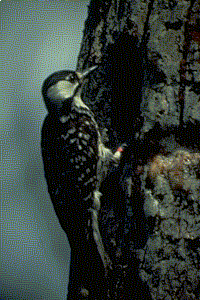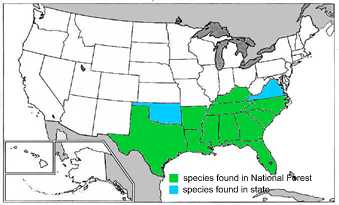
USFWS photo
Red-cockaded woodpecker
Picoides
borealis
Endangered
Story

Range
The black, white and red
woodpecker is about 7-8 inches long and feeds primarily on insects such as
ants, beetles, and wood-boring insects. They are unusual in their nesting
habits. Often, in addition to the parents, three or more male individuals
from previous generations help in raising the young.
Forest Dependence
The red-cockaded woodpecker is extremely dependent on old-growth forests. It's range is limited to the southern pine forests, and open stands of pine with 80-120 year old trees are heavily preferred for nesting habitat. The woodpeckers avoid dense stands, but can forage in pine stands 30 years old or older.Decline in red-cockaded
woodpeckers is attributed in large part to loss of habitat. The new dense
stands of pine that have replaced the old-growth are uninhabitable for the
woodpeckers, and old open stands are prevented by fire suppression along with
other factors.